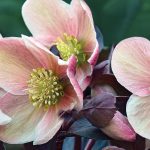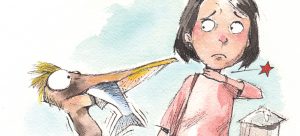
Hardy Hummers
Rufous hummingbirds are midwinter guests
By Susan Campbell
It may sound odd, but this is a good time to talk about hummingbirds. I have been fielding reports of these tiny, winged jewels for weeks. So far, I have banded 17 and have details on almost 100 more — and counting! Yes, even in the middle of the winter.
Here in North Carolina, hummingbird lovers can find or attract these amazing little fliers any month of the year. And this winter has been a particularly productive season for hardy hummers across the state. Predictably, the bulk of the hummingbirds I have encountered in the Piedmont have been rufous hummingbirds.
Annually, shorter days and cooler temperatures herald the return of rufous hummingbirds from points far to our north and west. The species breeds from the Rocky Mountains up into southern Canada and across to southeastern Alaska. They begin nesting when there is still snow on the ground and vegetation is sparse. In the cooler months, the majority of rufous can be found wintering in southern Mexico. However, it has been discovered in the last few decades that a wintering population exists in the southeastern United States. Across North Carolina, dozens of rufous take up residence between October and April. Many go unnoticed unless they appear at late-blooming plants or sugar water feeders. These are extremely tough little critters.
These tiny birds that spend their summers at high latitudes are well adapted to cold weather. They can forage in below freezing temperatures, searching thick vegetation for insects with little difficulty. At night and during colder, wet periods, they will seek out thick evergreen cover and use torpor, a nighttime hibernation, to conserve energy. The pines, cedars, hollies and magnolias in central North Carolina make excellent winter habitat for rufous hummingbirds.
The male rufous is very distinctive, having rusty body feathers in addition to a coppery iridescent gorget. Females, however, are a different story. Their size and shape are not very distinctive. Aside from reddish-brown color at the base of their tail feathers, and perhaps a smattering of brownish feathers around the face and flanks, they appear much like immature male ruby-throateds. They also look very similar to a few other species of Western hummers such as the Allen’s, broad-tailed or calliope hummingbird. For those with a good musical ear, the vocalization — a loud series of “stick” notes — may give a rufous away.
It is interesting to note that some of these tiny marvels return to the same feeder from one winter to the next. In fact, some individuals are faithful to the same location over their lifetime, which can be seven years. To date, we have had three females that have done just that, proven by the tiny aluminum bands I placed on their legs the first year. Some individuals choose to overwinter in different locations in the Southeast. This year we have two “foreigners.” One of them was originally banded by a colleague of mine outside Mobile, Alabama, two winters ago.
Furthermore, there have been some extremely lucky folks, including hosts in both the Sandhills and the Triad, who have hosted not one, but multiple rufous over the course of a single season. Last November, both a hostess in Asheville and another at Riverbend County Park outside Hickory each had three female rufous coming in for sugar water. A friend and research colleague who runs that park is investigating a fourth female rufous who turned up on February 1.
And no need to worry: Winter sugar water feeder maintenance is straightforward. Hang it in an open location and simply rinse and refill every two weeks or so. In our area, a feeder hung close to the house will be protected most days and many of the nights. The regular solution (4 parts water; 1 part sugar) will not freeze unless the air temperature drops below 27 degrees.
So, go ahead and hang a feeder any time. It is absolutely never too late to get noticed. Who knows? It may be found by a passing rufous hummingbird or two. OH
Susan would love to receive your wildlife observations and/or photos at susan@ncaves.com.
Photograph by Mark Shields





